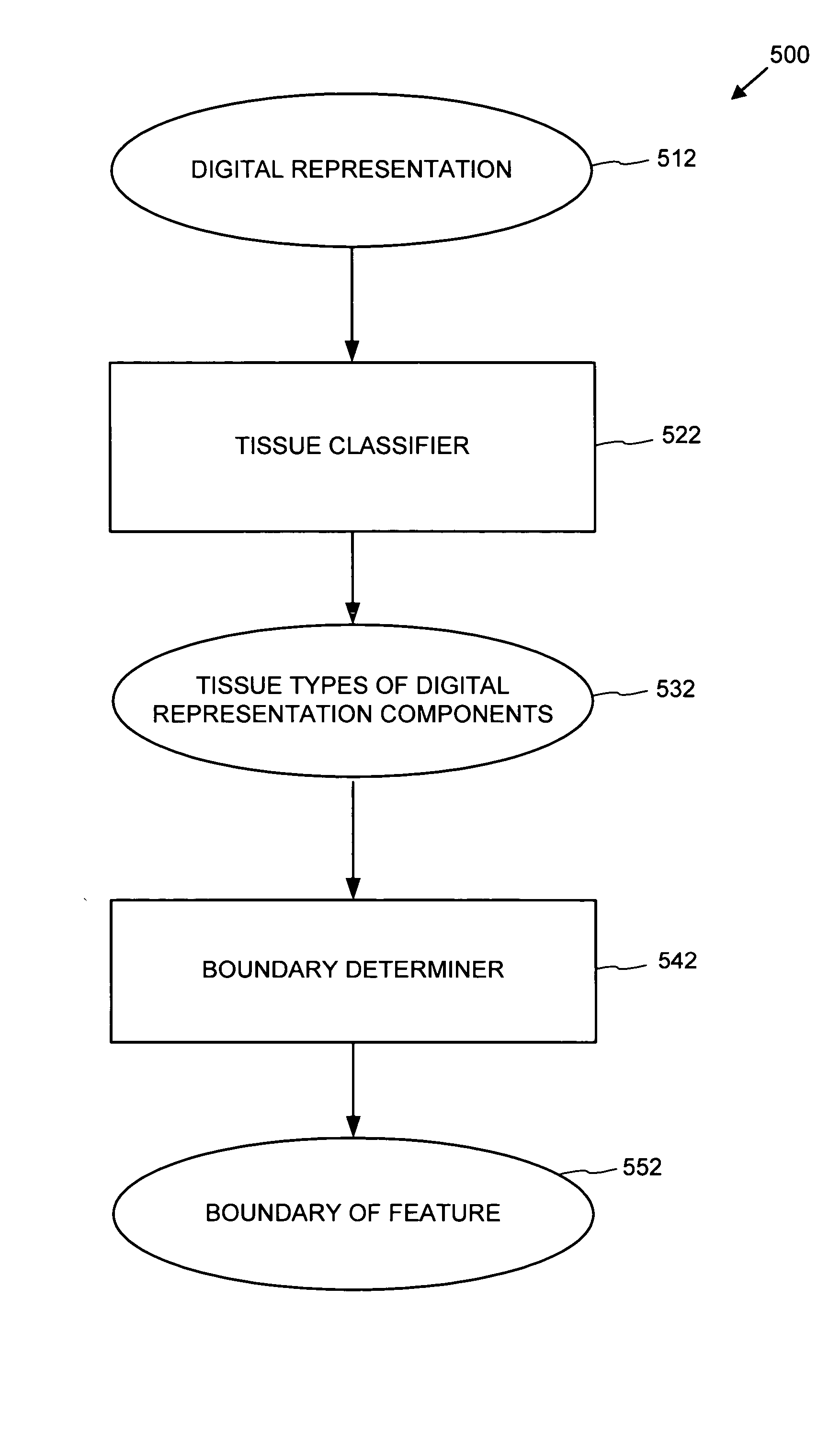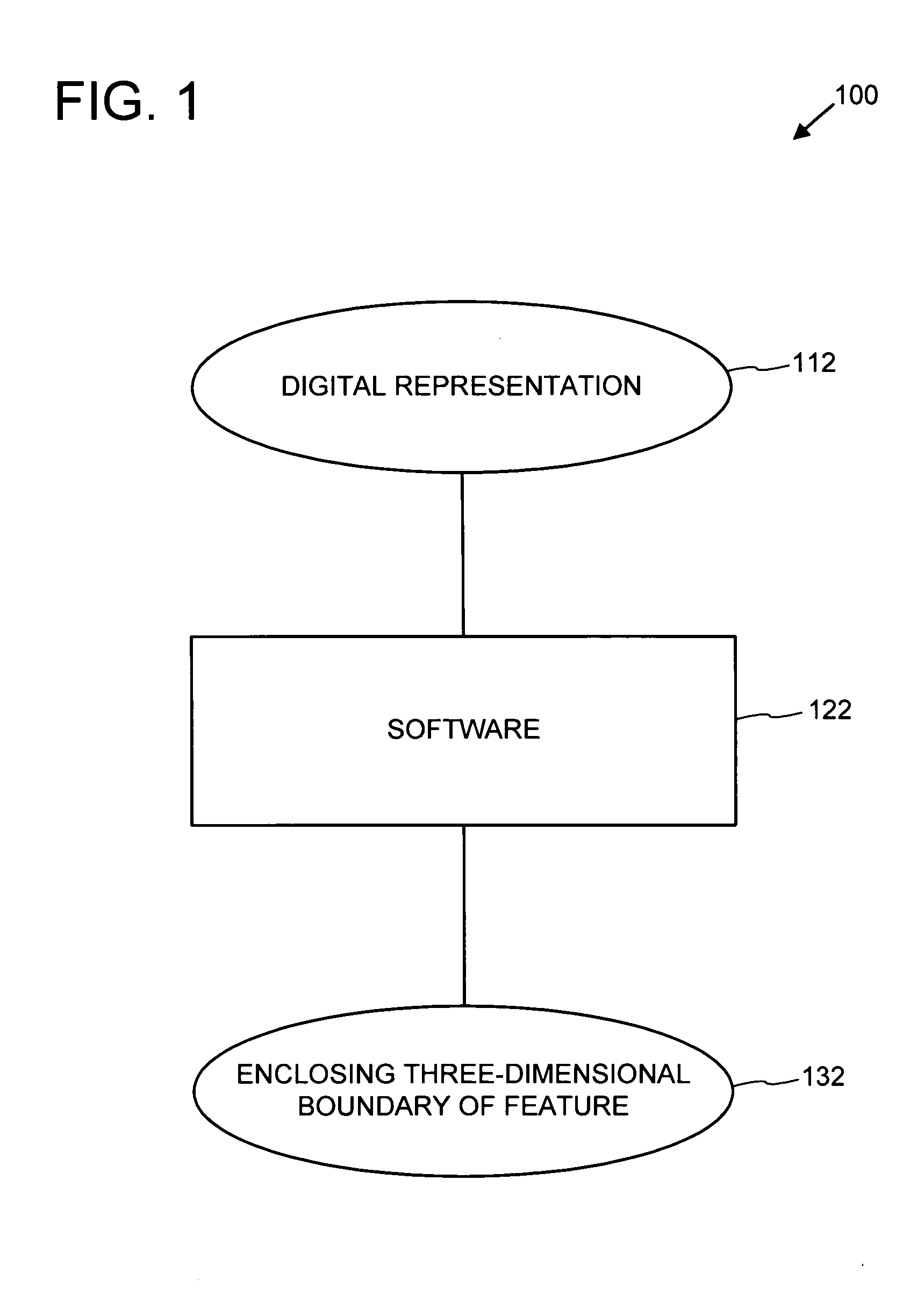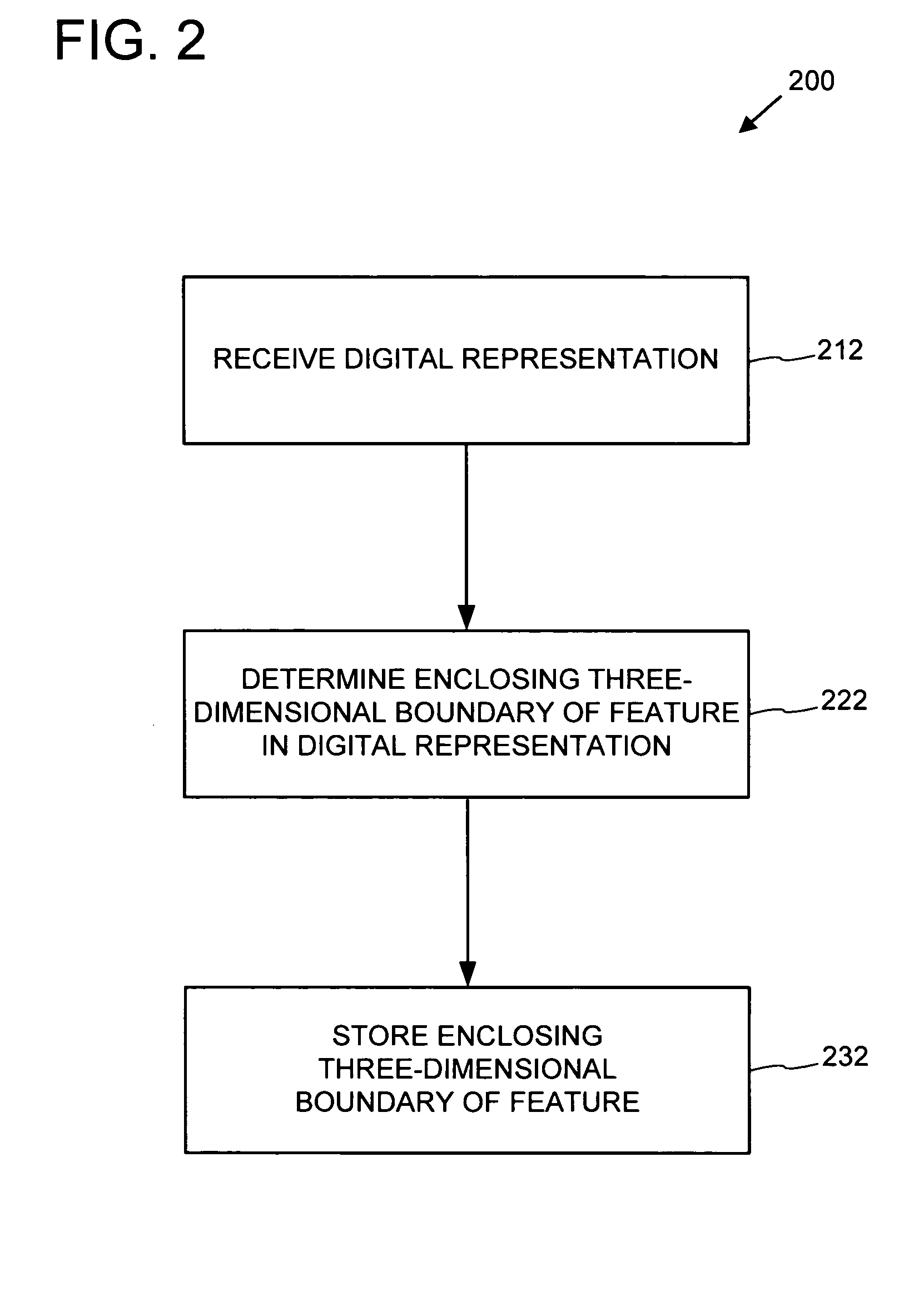Determination of feature boundaries in a digital representation of an anatomical structure
a digital representation and feature boundary technology, applied in image analysis, image enhancement, instruments, etc., can solve the problems of affecting the efficiency of analysis of the amount of data presented to the physician, significant limitations of current automated techniques, and the inability to accurately determine the boundary of the feature boundary in the digital representation of the anatomical structur
- Summary
- Abstract
- Description
- Claims
- Application Information
AI Technical Summary
Benefits of technology
Problems solved by technology
Method used
Image
Examples
example 1
Exemplary System for Determining Boundary of a Feature in a Digital Representation of an Anatomical Structure
FIG. 1 shows an exemplary system 100 for determining an enclosing three-dimensional boundary 132 of a feature in a digital representation 112 of at least a portion of an anatomical structure.
The digital representation 112 is processed by the software 122 to determine the enclosing three-dimensional boundary 132 of at least one feature represented in the digital representation 112. The software 122 can employ any combination of the technologies described herein.
In any of the examples described herein, a variety of feature characteristics can be determined via its enclosing boundaries 132 if desired. For example, geometric and volumetric characteristics can be determined via the enclosing boundaries.
Further, the boundaries 132 can be depicted via user interfaces. For example, a graphical depiction of a feature via its enclosing three-dimensional boundary can be displayed...
example 2
Exemplary Method for Determining Boundary of a Feature in a Digital Representation of an Anatomical Structure
FIG. 2 shows an exemplary method 200 for determining an enclosing three-dimensional boundary of a feature represented in the digital representation. The method can be performed, for example, by the system 100 of FIG. 1. The method 200 and any of the other methods described herein can be performed by computer-executable instructions stored on one or more computer-readable media.
At 212, a digital representation (e.g., the digital representation 112 of FIG. 1) representing at least one feature in at least a portion of an anatomical structure is received.
At 222, an enclosing three-dimensional boundary of the feature in the digital representation is determined. As described in the examples, a variety of techniques can be used for determining such a boundary. For example, tissue types can be determined, and a boundary can be based on the tissue types.
At 232, the enclosing th...
example 3
Exemplary System for Classifying Candidates in a Digital Representation via Boundary
FIG. 3 shows an exemplary system 300 for processing a plurality of candidate features of interest with software to classify the candidate features of interest. A plurality of feature candidates 312 are received by the software 322, which indicates the classifications of interest 332 or not of interest 334. For example, in a system for identifying polyps in a virtual colon, a feature can be classified as being of interest (for example, a polyp) or not of interest (for example, not a polyp). Additional classifications are possible (e.g., classifying a candidate feature as being a normal anatomical structure).
The software 322 can employ any combination of the technologies described herein.
The feature candidates 312 can take a variety of forms. For example, other software (not shown) can scan a digital representation of at least a portion of an anatomical structure and detect features as candidate f...
PUM
 Login to View More
Login to View More Abstract
Description
Claims
Application Information
 Login to View More
Login to View More - R&D
- Intellectual Property
- Life Sciences
- Materials
- Tech Scout
- Unparalleled Data Quality
- Higher Quality Content
- 60% Fewer Hallucinations
Browse by: Latest US Patents, China's latest patents, Technical Efficacy Thesaurus, Application Domain, Technology Topic, Popular Technical Reports.
© 2025 PatSnap. All rights reserved.Legal|Privacy policy|Modern Slavery Act Transparency Statement|Sitemap|About US| Contact US: help@patsnap.com



